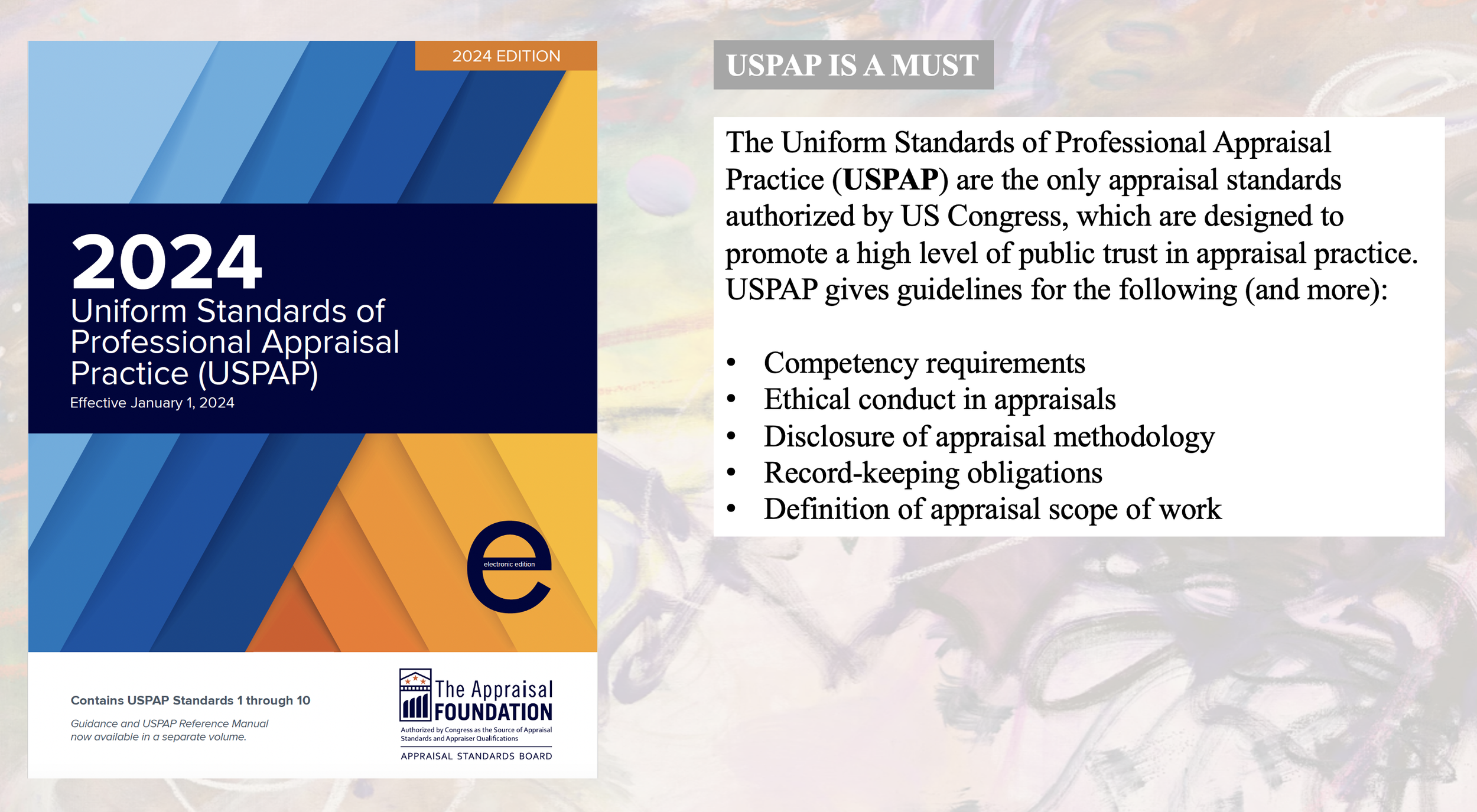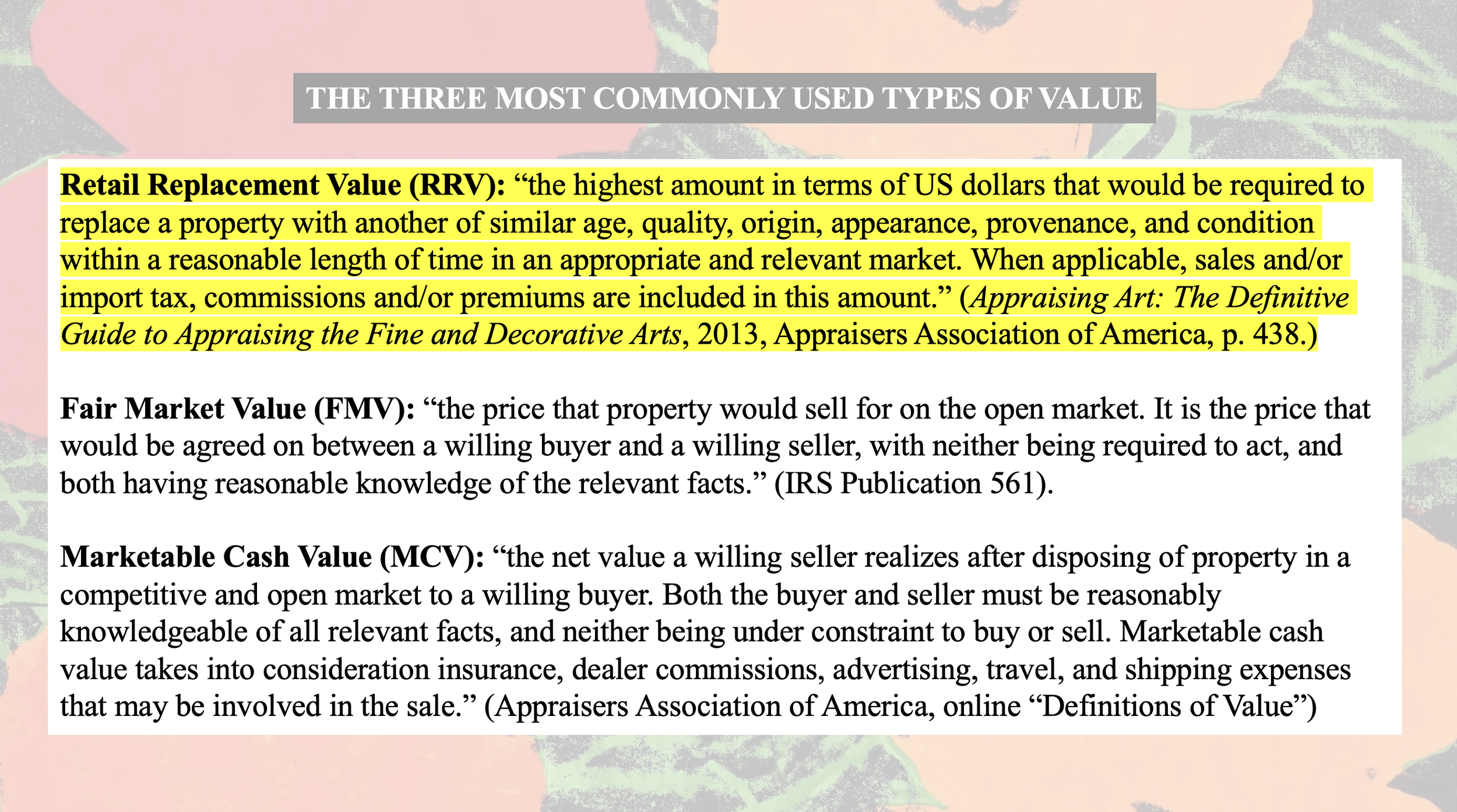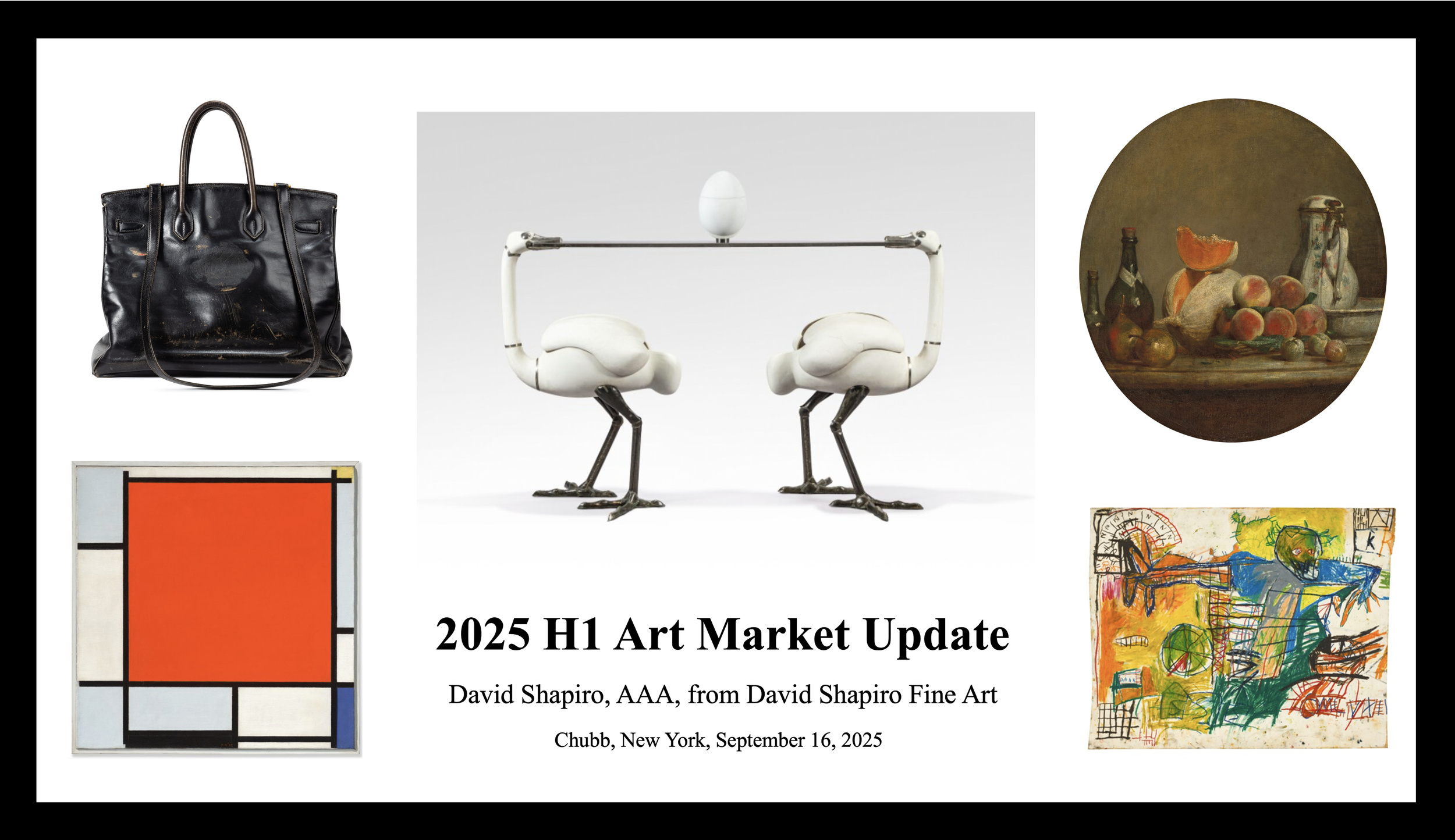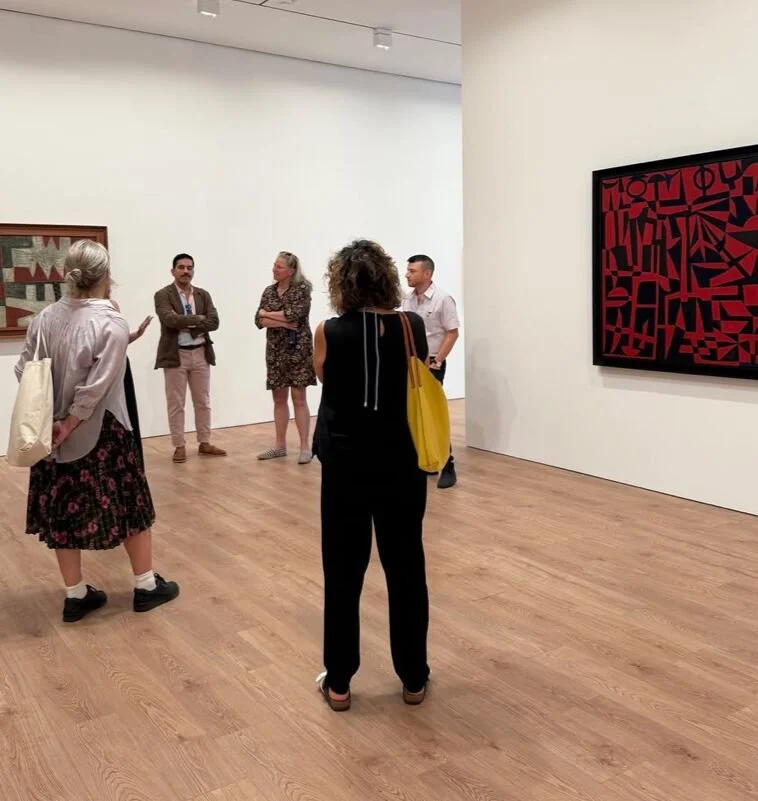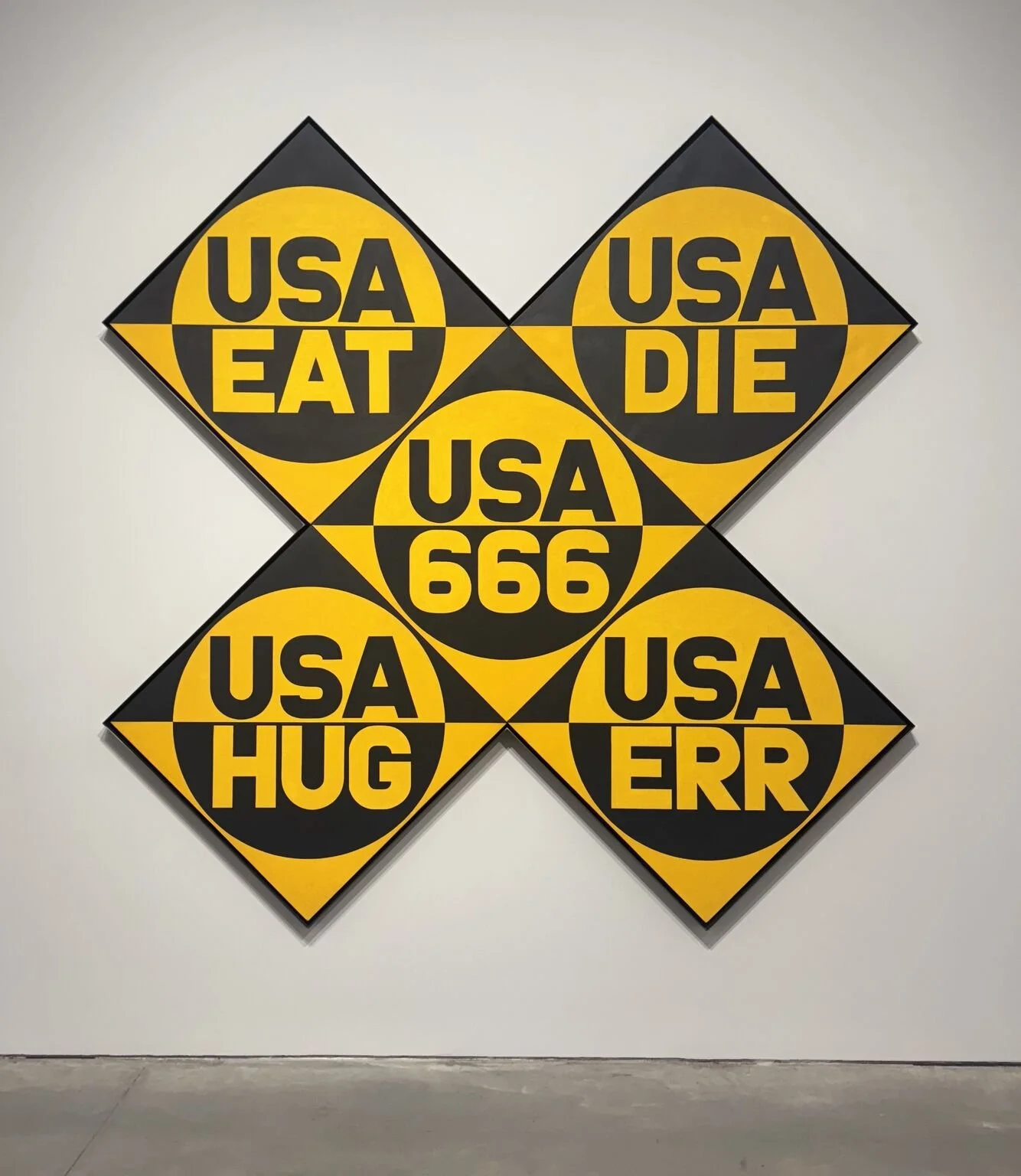It was a pleasure to contribute to the December 2025 edition of Shook, Hardy & Bacon's “Art Law Bulletin.” This feature, assembled by Channah M. Norman, Tristan L. Duncan, and Alicia J. Donahue, is titled Art Basel Miami Beach: An Art Appraiser’s Perspective. My contribution is as follows:
The Artsy Art Basel Miami Beach wrap article says that the highest sale at the fair was Andy Warhol’s “Muhammad Ali” (1977) for $18 million at the Lévy Gorvy booth, and ARTNews says that the most expensive work on offer at the fair was a 1979 untitled Joan Mitchell on offer from Richard Gray Gallery for $18.5 million, though the report from Art Basel itself states that David Zwirner sold its Mitchell, “Sunflowers” (1990-91), for $20 million.
In fact, none of the above were the highest offerings at the fair. Gagosian was offering Picasso’s “Surreal Boy with a Basket” (1939) for $22 million, and Van de Weghe was offering Jean-Michel Basquiat’s “Onion Gum” (1983) for $21.5 million. These were the highest asking prices that I observed at this edition of Art Basel.
To my knowledge, the press has not commented on whether the Picasso or the Basquiat sold at the fair, and indeed, this may never be known, considering that dealers, being protected by the Privacy Rule in the Gramm-Leach-Bliley Act, have no legal obligation to disclose any of their realized prices at art fairs or otherwise, even while local laws may require them to conspicuously publish asking prices at the point of exposure. Although dealers may offer information about realized prices to journalists or in exit surveys issued by a fair, doing so is voluntary. Consequently, reports of completed transactions at art fairs are necessarily approximate at best, unlike published results of sales at public auction, which offer clear indicators of the market.
Whether or not the most expensive works on offer at Art Basel found buyers that week, it is worth noting that even at this fair, which is the largest and generally considered the most significant U.S. art fair, the highest end of offerings capped out around $20 million, which could be considered within range for a major art fair, notwithstanding occasional higher outlier offerings. This level is considerably lower than the high end of the auction market.
By comparison, in the November 2025 marquee auctions in New York, 19 lots fetched prices in excess of $18 million each (including buyer's premium), among which 10 lots sold above $40 million. Among these, six lots sold above $50 million, namely three Klimt paintings, a van Gogh, a Rothko, and a Kahlo. Klimt’s “Portrait of Elisabeth Lederer” fetched $236.4 million at Sotheby’s, the second highest auction price ever realized for a work of art and the highest for a work of modern art at auction.
Adjacent to the fine art sphere, the high end of the auction market has continued to witness phenomenal results in December 2025, most notably the sale of a Fabergé egg for $30.2 million at Christie’s in London and the sale of François-Xavier Lalanne's Hippopotamus Bar for $31.4 million at Sotheby’s in New York, an all-time auction record for the design sector.
The soaring high end seen in November was in no small part driven by circumstance: among the top 10 lots in the November 2025 auctions, 75% of total sales (by value) comprised estate property, the timing of which is beyond anyone's control. However, there were also significant discretionary sales among the highest ($18 million+) tier, including the sale of the Kahlo, “El sueño (La cama),” for $54.7 million, which set the record for any female artist at auction and any Latin American artist at auction. We simply did not see such offerings at Art Basel.
Anecdotal as they may be, reports indicated brisk sales in the middle market at Art Basel Miami Beach this year. One may speculate as to whether the buoyant auction market of November 2025, in which overall totals far surpassed those of equivalent sales in recent seasons, primed the mood for the fair such that private sales were easier to effect. Although the record sale of a $236 million Klimt from the Lauder estate may have very little direct correspondence to the relative volume of six-figure transactions that dealers may make at the fair, it is indeed reasonable to speculate that mood may have been a factor, though shifts in market behavior often owe to a variety of cultural and economic factors, and direct causation can be difficult to trace.




